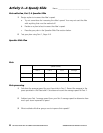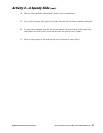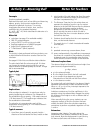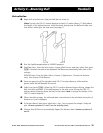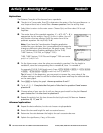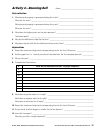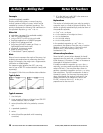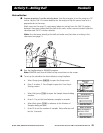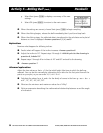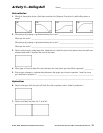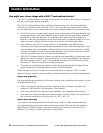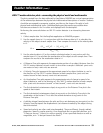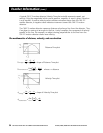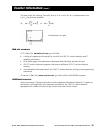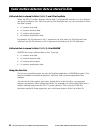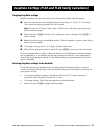
30 GETTING STARTED WITH THE CBR 2™ SONIC MOTION DETECTOR © 1997, 2004, 2006 TEXAS INSTRUMENTS INCORPORATED
Activity 5—Rolling Ball
(cont.)
Parabolic
g. Select Next (press q) to display a summary of the new
settings.
h. Select OK (press s) to return to the main screen.
Í When the settings are correct, choose Start (press q) to begin sampling.
Î When the clicking begins, release the ball immediately (don’t push) and step back.
Ï When the clicking stops, the collected data is transferred to the calculator and a plot of
distance vs. time is displayed. Answer questions 2, 3, 4, and 5.
Explorations
Examine what happens for differing inclines.
Ê Predict what will happen if the incline increases. Answer question 6.
Ë Adjust the incline to 30¡. Repeat steps 2 through 6. Add this plot to the drawing in
question 6, labeled 30¡.
Ì Repeat steps 2 through 6 for inclines of 45¡ and 60¡ and add to the drawing.
Í Answer question 7.
Advanced explorations
Adjust the time values so that x = 0 for the initial height (the time at which the ball was
released. You can do this manually by subtracting the x value for the first point from all the
points on your plot, or you can enter
L1(1)"A:L1NA"L1.
Ê Calculate the values for a, b, and c for the family of curves in the form y = ax
2
+ bx + c
at 0¡, 15¡, 30¡, 45¡, 60¡, 90¡.
Ë What are the minimum and maximum values for a? Why?
Ì Write an expression describing the mathematical relationship between a and the angle
of inclination.



